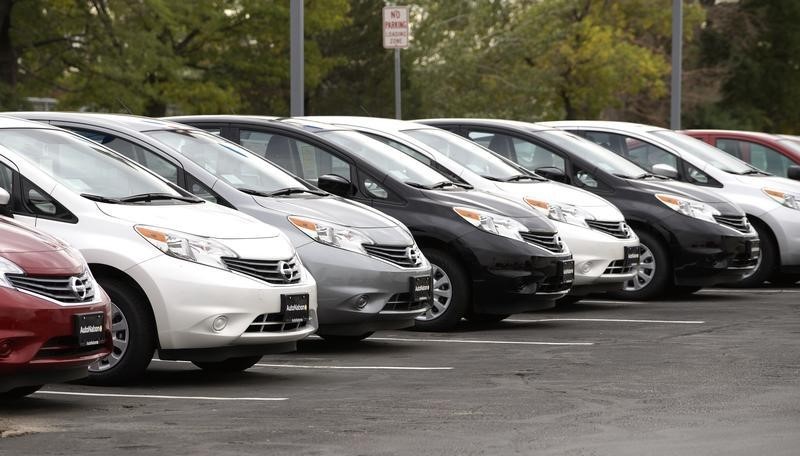By Lucia Mutikani
WASHINGTON (Reuters) - U.S. consumer spending rose in July as households stepped up automobile purchases, offering further evidence of strength in the economy that keeps the door open to a Federal Reserve interest rate hike this year.
While other data on Friday showed consumer sentiment dipped in August, likely as households fretted over a recent stock market sell-off, confidence remained at levels consistent with solid consumer spending growth.
The Commerce Department said consumer spending, which accounts for more than two-thirds of U.S. economic activity, increased 0.3 percent last month after a similar gain in June.
Spending on long-lasting manufactured goods like automobiles increased 1.1 percent, reversing June's drop. Auto purchases accounted for about half of the rise.
When adjusted for inflation, consumer spending rose 0.2 percent after being flat in June.
"We score this report as a solid adjunct to yesterday's strong GDP report that should encourage members of the Fed's policy-making committee that income and spending fundamentals remain in good shape," said John Ryding, chief economist at RDQ Economics in New York.The economy grew at a 3.7 percent annual rate in the second quarter. The consumer spending data was the latest report indicating momentum in the economy as it confronted recent global financial markets turbulence, sparked by concerns over a slowing Chinese economy, which has diminished the chances of an interest rate increase next month.
Fed Vice Chairman Stanley Fischer told CNBC on Friday that there had been "a pretty strong case" for a September lift-off in the central bank's short-term interest rate before the stock markets sell-off. However, he said it was too early to decide whether the turmoil had made a rate hike next month less compelling.
"We're still watching how it unfolds. So I wouldn't want to go ahead and decide right now what the case is: more compelling, less compelling, etcetera," said Fischer.
Prices for U.S. Treasury debt fell on Fischer's comments, while the dollar rose against a basket of currencies. U.S. stocks slipped after two days of hefty gains.
INFLATION STILL MUTED
Economists say that underlying strength, also highlighted by a rebound in business spending, buoyant housing and labor markets, gives the economy muscle to weather the fallout from the markets rout.
Muted inflation, however, suggested the Fed could find it difficult to hike rates next month even if financial markets settled down before the Sept. 16-17 policy meeting. Low inflation dominated the discussions at the July 28-29 meeting.
The personal consumption expenditures (PCE) index, excluding food and energy rose 1.2 percent in the 12 months through July, the smallest rise since March 2011. This so-called core PCE price index is the Fed's preferred inflation measure. It increased 1.3 percent in June and is running below the Fed's 2 percent target.
"While the Fed members should feel good about the economy, they will likely remain queasy about inflation. The Fed's conundrum continues unabated," said Joel Naroff, chief economist at Naroff Economic Advisors in Holland, Pennsylvania.
In a separate report, the University of Michigan said its consumer sentiment index fell to 91.9 this month from a reading of 93.1 in July. Still, the index remained at levels consistent with a 2.9 percent growth pace in consumer spending this year.
The survey showed a mild decline in buying intentions for durable goods and an increase in home purchase expectations.
"We continue to see relatively stable buying intentions as a positive for consumer spending activity in the months to come. And as the global equity markets have rebounded, we expect consumer confidence to pick up over the next few months," said Cheng Chen, an economist at TD Securities in New York.
Consumer spending should be supported by steady income growth and higher savings. Last month, personal income increased 0.4 percent in July as wages and salaries recorded their largest rise since November 2014.
Income has risen by the same margin for four straight months. Savings increased to a $651.1 billion annual rate from $627.3 billion in June.
"The economy has built up a huge amount of steam to push it forward in the months to come with the substantial cash reserves that consumers are holding," said Chris Rupkey, chief financial economist at MUFG Union Bank in New York.
